What is A 'super-Earth' - New Discovery About 'Signs of Life'
♦ How Old Is The Earth In Science, Bible
♦ Top 7 Amazing Facts about the Earth we're living in!
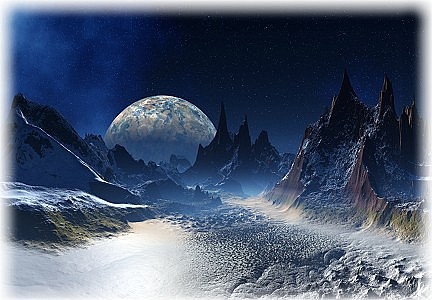 |
| What is a super-Earth? |
| Contents |
What is A 'super Earth'?
"Super-Earth" is the term used to refer to extrasolar planets many times the mass of Earth, with rocky surfaces and thin atmospheres.
In astronomy it is used to refer to a planet consisting of rocks, metals and larger than Earth, they are usually 5 to 10 times the mass (1.5 to 2.5 times the radius) of the planet. our green.
However, according to the previous concept (when there were no new discoveries), the term super-Earth did not mean at all to refer to planets where life existed.
In other words, a super-Earth or super-Earth-like planet is a planet that orbits a host star, is more massive than Earth, and has a similar composition to Earth. Super-Earths will also have plate tectonics similar to Earth's, and they will have roughly the same structure: a metal core of mostly iron in the center, surrounded by rock.
There are also exoplanets with a mass smaller than Earth, but it is almost impossible to find them with current human observation methods, instead, at the present time we can only find them. see planets larger than our blue planet.
Video - Discover 2 New "super-Earth" That May be Suitable for Life:
Super Earth near Earth
In June 2022, NASA announced a new discovery that, through the Alien Planet Search Program, space scientists have discovered two brand new super-Earths.
Interestingly, these two super-Earths are only about 33 light-years from Earth! This is one of the closest planetary systems ever discovered by man.
As for the closest planet discovered by humans, it is Proxima b, discovered by astronomers in 2016, only about 4 light-years from Earth.
So is it possible that alien life exists on these two super-Earths? Will humans be able to immigrate to these two planets in the future?
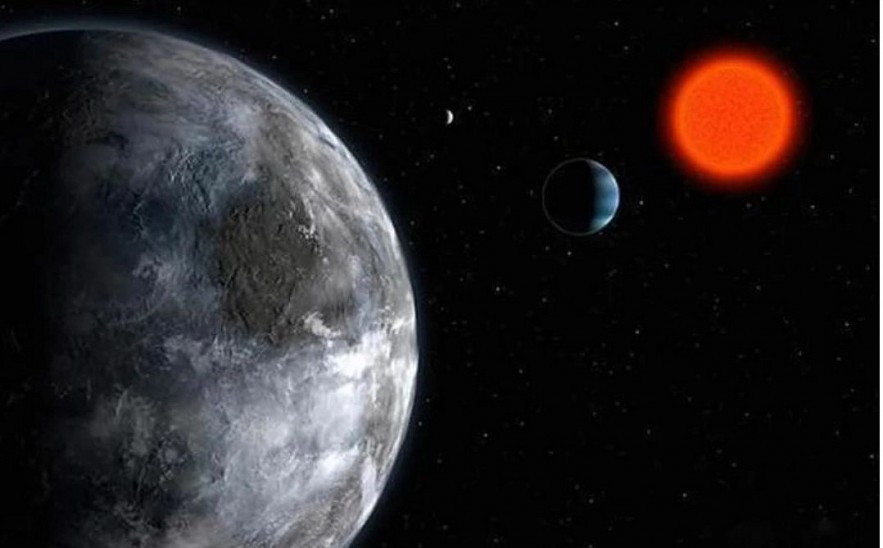 |
| NASA discovered 2 super-Earths |
Both super-Earths orbit the red dwarf star HD 260655. According to preliminary observations of the two planets by scientists, the mass of planet HD 260655 b is twice that of Earth, and 1.2 times the volume of the planet. Earth, has a rotation period of 2.8 days and a surface temperature of 435 degrees Celsius; The mass of planet HD 260655 c is 3 times that of our planet, its volume is 1.5 times that of Earth, its rotation period is 5.7 days, and its surface temperature is 284 degrees. C.
From these data, it can be seen that the two super-Earths are very close to the host star HD 260655, and the surface temperature is hundreds of degrees Celsius. If the star is not a red dwarf, the energy emitted Since its brightness and heating are much weaker than that of our Sun, the surface temperatures of these two super-Earths are certainly much higher than currently observed. Of course, red dwarfs also have certain advantages when compared to our Sun, which is that they have a long stable lifespan and can continue to burn for trillions of years.
| Even if humans could travel at the speed of light, it would take 33 years to reach these two super-Earths. However, it is difficult for humans to overcome technical limitations in a short period of time. Therefore, even if these two super-Earths are suitable for human habitation and are another Garden of Eden next to the Earth, it is difficult for humans to find a way to access them in a short time. In fact, the Earth will still be more suitable for human habitation for a long time in the future. |
What's in the Newly Discovered 'super-Earth' TOI-561b?
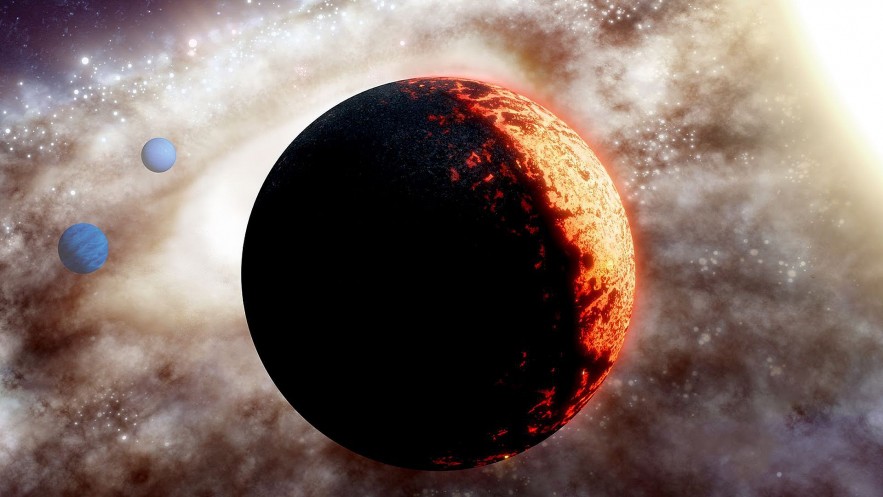 |
| Super-Earth TOI-561b has 10 times the mass of Earth |
A research team turned to NASA's Transiting Exoplanet Survey (TESS) satellite to find a new "super-Earth" named TOI-561b.
TESS, launched into space in 2018, is tasked with surveying nearby stars for orbiting exoplanets.
Stephen Kane - astrophysicist at the University of California (USA), study co-author - said TOI-561b orbits one of the rare stars located in the galactic disk of the Milky Way.
This star system is estimated to be about 14 billion years old, while the Sun is only 4.5 billion years old. Meaning, TOI-561 appears when most stars in the Milky Way begin to glow.
The team found that TOI-561b's orbit around its host star is equivalent to half a day on Earth, meaning two days on Earth has passed.
In terms of structure, the density of matter inside TOI-561b is quite low. This means that this "super-Earth" has quite a few heavy elements like iron or magnesium. This further proves that TOI-561b formed a long time ago.
The distance between the "super-Earth" and the host star is quite close, so TOI-561b has a surface temperature of 1,726 degrees Celsius. This temperature is too hot to sustain life. However, scientists believe that the planet was warmer than millions of years ago and have not ruled out the possibility that it once harbored life.
Currently, the team is determining more about the interior of this exoplanet.
Japan Discovered A Habitable super-Earth
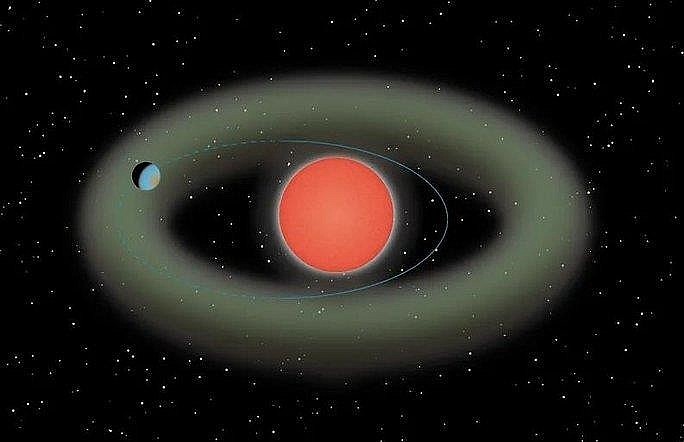 |
| The red dwarf Ross 508 and the super-Earth Ross 508b orbit. The faint green marker is the "life zone" of the star, the blue ellipse is the orbit of Ross 508b. (Photo: ASTROBIOLOGY CENTER) |
The mysterious super-Earth 37 light-years away, discovered by a new instrument aboard the National Observatory of Japan's Subaru Telescope.
The new super-Earth, named Ross 508b, is 37 light-years from Earth, orbiting a red dwarf star in the constellation Crab.
Ross 508b has four times the mass of Earth and orbits so close to its parent star that a year there is only 11 days on Earth. However, the red dwarf is a much smaller and cooler star than the Sun, so its Goldilocks "habit zone" is also much closer. The orbit of super-Earth Ross 508b coincides largely with this habitable zone.
Red dwarfs are stars that make up three-quarters of the stars in the Milky Way Earth-containing galaxy, but because they are small and dim, telescopes are difficult to observe.
Red dwarfs are easier to see at infrared wavelengths, so a team of scientists from Japan's Center for Astrobiology designed a new infrared observation device, the infrared Doppler IRD, mounted into the telescope to increase the power of Subaru's "magic eye".
The Ross 508b was the first fruit of this innovation. This super-Earth has an elliptical orbit and, despite a short distance away from the star's habitable zone, it is still perfectly capable of conserving liquid water - a prerequisite for life.
Scientists will continue to pursue it and analyze the data in more detail for clues to water - if any - and other possible signs of life.
Facts About Signs of Life on Super-Earth TOI-1075b
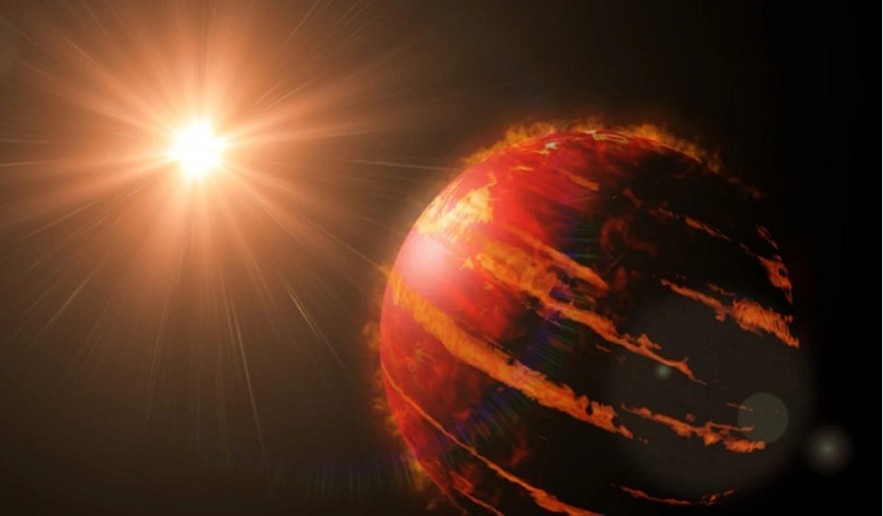 |
| Super-hot TOI-1075b has just been discovered |
Scientists continue to detect a super-Earth named: TOI-1075b, thanks to data sent back from NASA's TESS telescope.
This is a super-hot planet, located about 200 light-years from our Milky Way, with a surface temperature of up to 1,000 degrees Celsius, enough to melt the material inside it into an "ocean of lava".
According to scientists, super-Earth TOI-1075b is a hot planet, its surface temperature is up to more than 1,000 degrees Celsius, enough to melt rocks, silicates, turning the surface of this planet into a "great ocean" molten lava ".
Observations from the TESS telescope show that this super-Earth has a radius of more than 1.8 times the radius of Earth, and a mass of 9.95 times that of our planet makes this hot planet look very majestic.
TOI-1075b completes one orbit around its star in about 14.5 hours.
Notably, astronomers were surprised to discover that this super-hot planet is located in the Fulton Gap - which is rare for supermassive exoplanets.
To be able to explain why TOI-1075b is in the Fulton Gap, the researchers hypothesized that the evaporation of the atmosphere led to the loss of planetary mass.
On the other hand, super-Earth-type exoplanets roughly the size of TOI-1075b typically possess dense atmospheres consisting of hydrogen and helium.
Because of this super-Earth's very high density of matter, estimated to be twice that of Earth, and its close proximity to its star, it is unlikely that this super-Earth has this type of atmosphere.
Currently, astronomers are still trying to determine the exact composition of TOI-1075b's atmosphere, and have not been able to come up with scientific evidence to support their hypothesis.
First of all, TOI-1075b may have no atmosphere and is a completely naked rocky planet. It may also possess a weak atmosphere whose composition may depend on the evaporation of surface materials fused by the temperature.
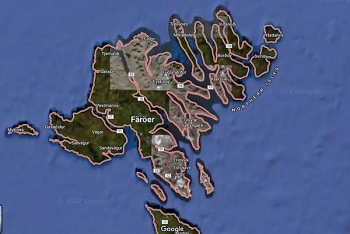 Fact-Check: Top 20 Secret Places on Earth That Blurred on Maps Fact-Check: Top 20 Secret Places on Earth That Blurred on Maps There are many secret places that are obscured or blacked out on Google Maps. Even if you zoom in all the way, you can't see ... |
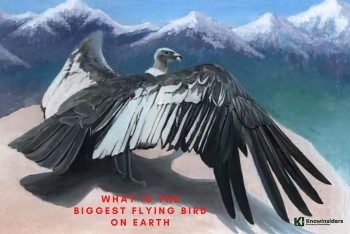 What Is The Biggest Flying Bird On Earth What Is The Biggest Flying Bird On Earth In ancient times, on earth there were many large flying that they could almost rule the whole world. Even humans were not their opponents. What ... |
 Top 11 Rarest Elements On Earth Today Top 11 Rarest Elements On Earth Today Do you know all rare elements on earth? What is the rarest type? Read on to explore the interesting facts about the rarest elements on ... |
 4 Weirdest & Dangerous Natural Phenomena on Earth Today 4 Weirdest & Dangerous Natural Phenomena on Earth Today Have you ever witnessed a colorful rainbow or snow turning pink? All these weird natural phenomena are observed somewhere in the world. They are not ... |























